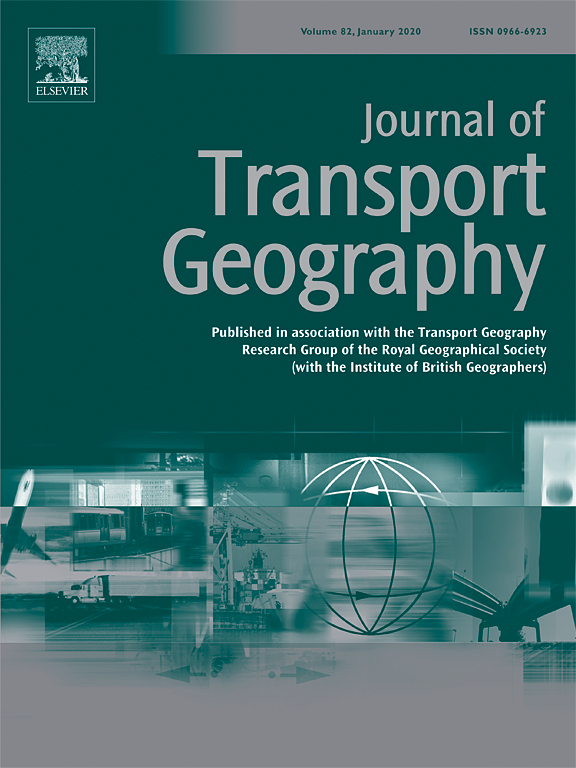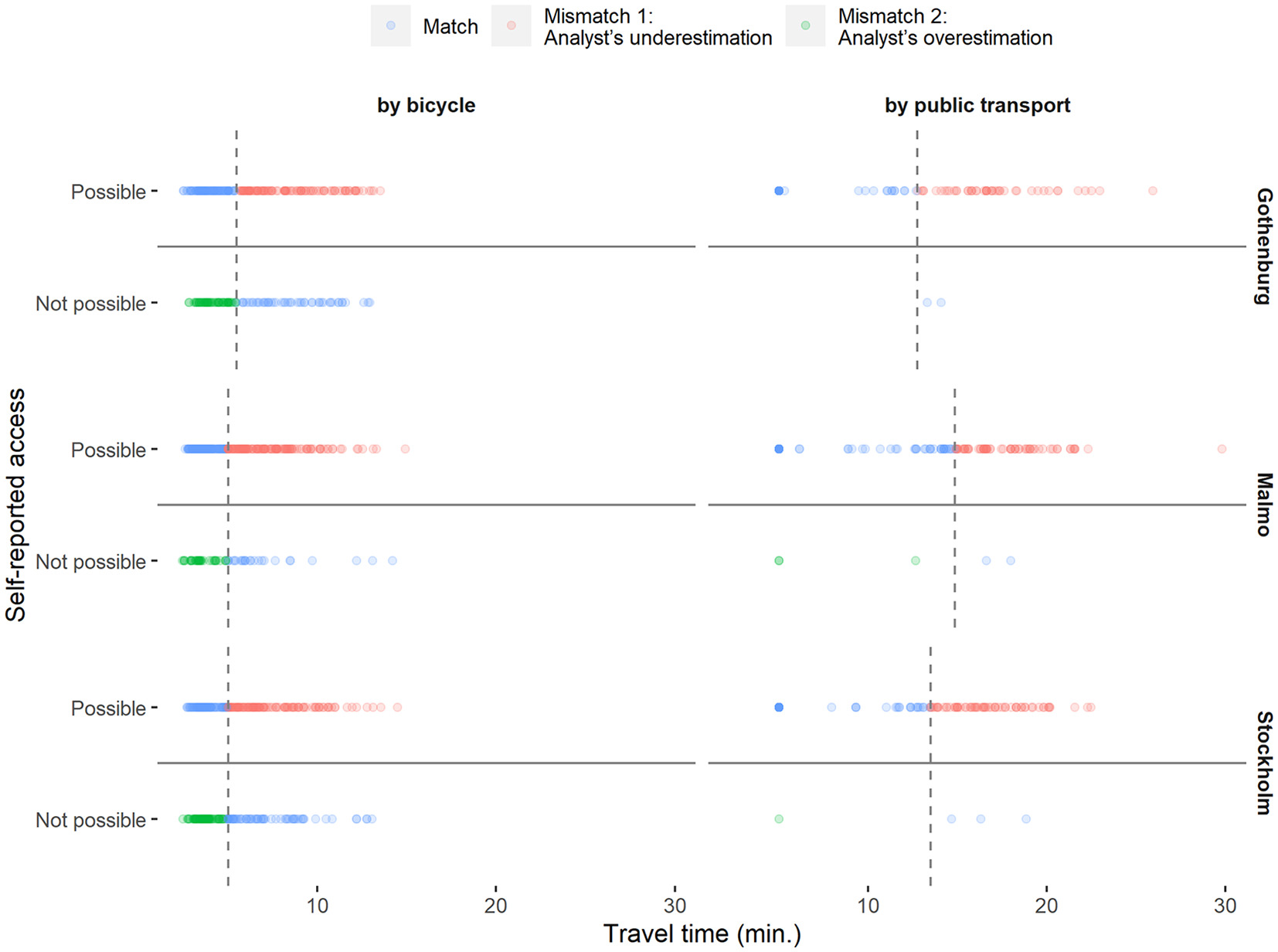Comparing calculated and self-reported accounts of accessibility
 Glad to share a new paper with
Jean Ryan (Lund University and K2) on what we might be missing when we measure accessibility in different ways. In this paper we examine the ways in which “objective” and “subjective” accounts of access differ and can complement one another. The study includes a comparison of (1) ‘objective’ indicators of accessibility to key activities by various modes of transport; and (2) individuals’ own perceptions of their capability to access valuable out-of-home activities and the modal options available to them.
Glad to share a new paper with
Jean Ryan (Lund University and K2) on what we might be missing when we measure accessibility in different ways. In this paper we examine the ways in which “objective” and “subjective” accounts of access differ and can complement one another. The study includes a comparison of (1) ‘objective’ indicators of accessibility to key activities by various modes of transport; and (2) individuals’ own perceptions of their capability to access valuable out-of-home activities and the modal options available to them.
We show that conventional transport models, by overlooking people’s perceptions of their accessibility, overestimate accessibility levels & underestimate inequalities. We also show how perceived accounts of access can be incorporated to improve conventional accessibility models. The paper is also good illustration of how one can use the Capability Approach in transport studies to operationalize the notion of accessibility as capability. The findings of the paper bring valuable insights for transport accessibility analysis, but it also has some important implications for researchers/policy makers concerned with social exclusion, transportation equity and mobility justice more broadly.
The paper is open access, and you can download it in the link below:
- Ryan, J., & Pereira, R. H. M. (2021). What are we missing when we measure accessibility? Comparing calculated and self-reported accounts among older people. Journal of Transport Geography, 93, 103086. https://doi.org/10.1016/j.jtrangeo.2021.103086 [open access]
Figure: Comparing calculated and self-reported accounts of accessibility.
